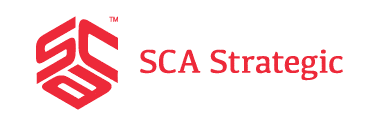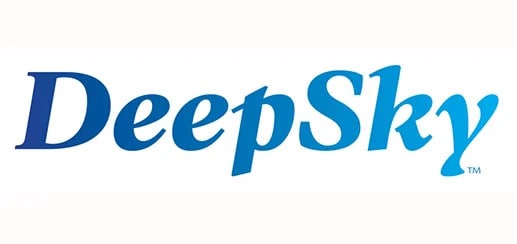Understand Warehouse Receiving Processes Before You Ship to Your 3PL Warehouse
Before sending your e-commerce brand’s products to the 3PL warehouse, you should understand typical warehouse receiving issues that impact fulfillment speed and cost. E-commerce teams managing shipments to 3PLs must plan ahead for potential hiccups with product identification, inspections, and placement.
Here is an overview of the warehouse receiving process to help you anticipate what might happen after your 3PL shipment and prevent stockouts, mispicks, and inaccurate data tracking.
What all is involved in the Receiving Process?
Receiving product into the warehouse is arguably the most important step in the fulfillment process. If inventory isn’t recorded accurately, mistakes will most certainly follow – resulting in everything from stock outs as well as order mis-picks. Without a rock-solid receiving process, everything else will most likely fall apart – whether you perform fulfillment in-house or use an outsourced 3PL service.
What all is involved in Receiving? Simply put, receiving is the process of bringing product into the warehouse, counting it to make sure total units were received (both total and by item), inspecting it for damage or other issues, performing any prep work to get it ready for actual inventory and sales, physically locating it into the proper area of the warehouse, updating the 3PL’s warehouse management system (WMS) to reflect all accurate data, and posting this information to client systems.
How is Product Sent to the Warehouse?
Product can be sent to the warehouse in a variety of ways. The most common ways that product is sent are using:
-Containers: Usually 40 foot or 20-foot containers, sent from overseas using a freight forwarding service. These containers can either be packed “floor loaded” (meaning that they stuff all of the boxes into the container without pallets and try to get in as much product as possible) or pallet loaded (the cartons within the container are stacked and wrapped on pallets within the container). If the container is floor loaded, it will take the warehouse longer to process the receiving of the container and thus costs will increase.
- Pallets: Usually pallet load quantities are shipped to the warehouse via Less-than-truckload (LTL) shipping carriers.
- Cartons: Usually cartons of product are shipped in instances where the quantities are much lower, the products are much smaller or there is an urgent need for receiving the product and thus it is shipped by expedited air freight. Cartons are shipped to the warehouse via small parcel shipping carriers (FedEx, UPS, USPS, etc.).
How is the Product Identified?
Product identification is a critical success factor in the process of accurately receiving product into the warehouse. Without appropriate product identification, items can be allocated to the wrong SKU, causing order mis-picks and inventory accuracy discrepancies.
In order for the 3PL warehouse to accurately count the product, there must be some identifying markers on each carton at a bare minimum. This will allow the warehouse staff to know what the contents are of the carton. For increased accuracy, and to allow the 3PL warehouse staff to perform receiving functions more efficiently and effectively using computer technology (such as bar code scanners or radio frequency identification “RFID” smart labels), cartons can be labeled with scannable bar codes or RFID smart labels. To sum it all up, product can be identified in these ways:
- Basic labels that identify the SKU/item
- Scannable bar code, RFID smart labels, etc
Sometimes, cartons contain multiple SKUs, in which case they must be opened to verify that the contents of all SKUs are present, or the outer carton (commonly referred to as a “master carton”) will contain many inner boxes (commonly referred to as an “inner carton”) with each contain a product. In the case of mixed cartons, it is critical for the cartons to be labeled as mixed pallets to flag the warehouse staff.
Furthermore, adding more details to the carton labeling can assist the warehouse in more quickly and accurately processing the shipment of product. For example, if the cartons are label with not only a SKU label but also quantities within the carton or even product descriptions, warehouse staff will have more knowledge to better receive the product. Of course, if cartons are bar code labeled, or labeled with an RFID tag, warehouse staff can simply scan the cartons and more effectively process each carton.
What Types of Inspection is Conducted?
Of course, counting the product is the most commonly known step in the receiving process. Counts can take the form of high-level carton counts (relying upon the quantities within each carton to be accurate) where cartons aren’t opened and the sum is taken of all master carton counts on one end of the spectrum, to breaking open each master carton and counting the contents of each inner carton at the other end of the spectrum. In some instances, actually opening up each box and inspecting the contents is necessary, as detailed below.
The cost to perform receiving in these different scenarios will vary, with costs increasing based upon the amount of time it takes to perform the process. Furthermore, the level of accuracy increases as the depth of inspection increases. In some instances, there will be a trade-off between increased costs and increased levels of accuracy. The only way to validate with total certainty the contents of a shipment is to break open and count all items, but this may not be feasible in all cases. If contents of a carton aren’t individually verified, it’s important to note that this could lead to inventory discrepancies.
But counting the product isn’t the only function that gets completed within the receiving process. The warehouse staff must also perform other important steps, including inspecting the product as well as any ancillary functions to prepare the product for sale.
When warehouse staff inspect the products, the first and least invasive form of inspection that they can perform is to simply check the outer cartons for any damage. The next level of inspection could be to break open an agreed upon number or percentage of cartons to inspect the product for damage, giving a higher degree of confidence that the products are in sellable condition. In cases where products are of extremely high value or are highly susceptible to damage, opening up and inspecting each carton for damage may be necessary.
Items may not only be quality checked (QC’d) for damage – they may also be checked for other factors. For example, an inbound receipt of printed t-shirts may be checked to ensure that not only the printing is of good quality, but that the printing is of the correct color, etc. Another example is that products may need to be inspected to verify that each component is included within the product.
What Ancillary Receiving Functions can a 3PL Warehouse Conduct?
In certain circumstances, a 3PL warehouse will need to conduct other functions during the receiving process in order to get the products ready for sale. These include but are not limited to:
- Labeling for automated inventory and picking/shipping (such as Amazon Prep/FBA labels)
- Kitting to assemble units together
- Testing to make sure products work (such as electronic products)
- Poly-bagging/Shrink-wrapping (such as poly-bagging t-shirts and apparel received from screen printers)
- Stripping off supplier/manufacturer labels
- Repackaging into other packaging (e.g. branded packaging)
- Preparing for subscription box models
- Preparing for high-volume pre-orders/back-orders
Where Does the Product Get Placed in the Warehouse and in the WMS?
After items have been counted, inspected and prepared for sale, there’s still work to be done. First and foremost, the product will need to be placed in the warehouse. For bulk stock that will be used at a later date, oftentimes it will be either stored in pallet racks or floor stacked in areas away from standard picking areas so that it’s out of the way until needed at a later date. For stock that will be picked and packed and shipped, oftentimes the product will be stored in pallet racks in such a way that it can be picked easily and quickly. This may necessitate putting them in pick bins, etc.
Second, all of the counts and data are entered into the 3PL’s WMS. Once entered, they can be viewed (most frequently online). 3PL warehouses that have even tighter controls over their processes will even make sure that this data gets synced to client systems, so that inventory counts will display appropriate (e.g. inventory levels will display correctly on Web Stores for consumers to order). Because these client-side and 3PL side systems sync, it’s extremely important for information to be not only timely but accurate.
How Long Should All of This Take?
Overall, the speed of the receiving process varies from company to company. Depending upon the size and complexity it can take days, and for some instances it can be done same day or within a few days. Sometimes there will be a heightened sense of urgency to process things quickly (e.g. when back orders exist and customers need products delivered quickly). In these cases, special provisions can be made with the fulfillment company in order to devote more resources to receive the product quicker. The biggest indicator of success is having an agreed upon timeline for different scenarios so that both sides are on the same page with regards to expectations.

















